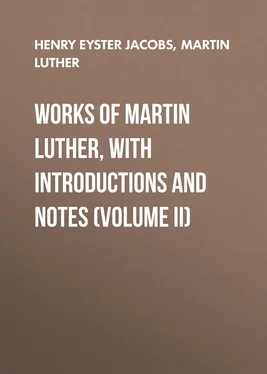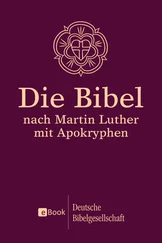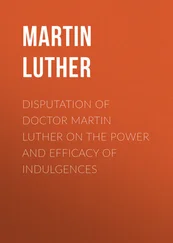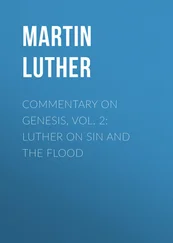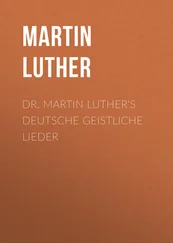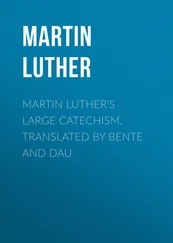Henry Eyster Jacobs - Works of Martin Luther, with Introductions and Notes (Volume II)
Здесь есть возможность читать онлайн «Henry Eyster Jacobs - Works of Martin Luther, with Introductions and Notes (Volume II)» — ознакомительный отрывок электронной книги совершенно бесплатно, а после прочтения отрывка купить полную версию. В некоторых случаях можно слушать аудио, скачать через торрент в формате fb2 и присутствует краткое содержание. Жанр: foreign_prose, foreign_religion, Философия, foreign_psychology, foreign_antique, на немецком языке. Описание произведения, (предисловие) а так же отзывы посетителей доступны на портале библиотеки ЛибКат.
- Название:Works of Martin Luther, with Introductions and Notes (Volume II)
- Автор:
- Жанр:
- Год:неизвестен
- ISBN:нет данных
- Рейтинг книги:3 / 5. Голосов: 1
-
Избранное:Добавить в избранное
- Отзывы:
-
Ваша оценка:
- 60
- 1
- 2
- 3
- 4
- 5
Works of Martin Luther, with Introductions and Notes (Volume II): краткое содержание, описание и аннотация
Предлагаем к чтению аннотацию, описание, краткое содержание или предисловие (зависит от того, что написал сам автор книги «Works of Martin Luther, with Introductions and Notes (Volume II)»). Если вы не нашли необходимую информацию о книге — напишите в комментариях, мы постараемся отыскать её.
Works of Martin Luther, with Introductions and Notes (Volume II) — читать онлайн ознакомительный отрывок
Ниже представлен текст книги, разбитый по страницам. Система сохранения места последней прочитанной страницы, позволяет с удобством читать онлайн бесплатно книгу «Works of Martin Luther, with Introductions and Notes (Volume II)», без необходимости каждый раз заново искать на чём Вы остановились. Поставьте закладку, и сможете в любой момент перейти на страницу, на которой закончили чтение.
Интервал:
Закладка:
200
See above, pp. 91 f.
201
See above, p. 91.
202
See above, p. 94.
203
i. e.. Promises to bestow on certain persons livings not yet vacant. Complaint of the evils arising out of the practice was continually heard from the year 1416. For the complaints made at Worms (1521), see Wrede, op. cit. , II, 710.
204
See above, pp. 86 f.
205
See above, pp. 92 f.
206
See above, p. 93.
207
See above, p. 89.
208
Rules for the transaction of papal business, including such matters as appointments and the like. At Worms (1521) the Estates complain that these rules are made to the advantage of the "courtesans" and the disadvantage of the Germans. (Wrede, op. cit. , II, pp. 675 f.)
209
The local Church authorities, here equivalent to "the bishops." On use of term see Realencyk. , XIV, 424.
210
The sign of the episcopal office; as regards archbishops, the pallium ; see above, p. 8q, and note.
211
See above, p. 87, note 1.
212
The first of the ecumenical councils (A. D. 325). The decree to which Luther here refers is canon IV of that Council. Cf. Köhler, L. und die Kg. , pp. 139 ff.
213
The primate is the ranking archbishop of a country.
214
"Exemption" was the practice by which monastic houses were withdrawn from the jurisdiction of the bishops and made directly subject to the pope. The practice seems to have originated in the X Century with the famous monastery of Cluny (918), but it was almost universal in the case of the houses of the mendicant orders. The bishops made it a constant subject of complaint, and the Lateran Council (Dec. 19, 1516) passed a decree abolishing all monastic exemptions, though the decree does not seem to have been effective. See Creighton , History of the Papacy, V, 266.
215
The papal interference in the conduct of the local Church courts was as flagrant as in the appointments, of which Luther has heretofore spoken. At Worms (1521) it was complained that cases were cited to Rome as a court of first instance, and the demand was made that a regular course of appeals should be re-established. Wrede, op. cit. , II, 672, 718.
216
The reference is Canon V of the Council of Sardica (A. D. 343), incorporated in the canon law as a canon of Nicaea ( Pt. II, qu. 6, c. 5 ). See Köhler, L. und die Kg. , 151.
217
i. e., Appealed to Rome for decision. This is the subject of the first of the 102 Gravamina of 1521 (Wrede, op. cit. , II, 672).
218
The judges in the bishops' courts. The complaint is that they interfere with the administration of justice by citing into their courts cases which properly belong in the lay courts, and enforce their verdicts (usually fines) by means of ecclesiastical censures. The charges against these courts are specified in the Gravamina of 1521, Nos. 73-100 (Wrede, op. cit. , II, 694-703).
219
The signatura gratiae and the signatura justitiae were the bureaus through which the pope regulated those matters of administration which belonged to his own special prerogative.
220
See above, pp. 88 f.
221
See above, p. 88, note 3.
222
See above, p. 94.
223
i. e., The cases in which a priest was forbidden to give absolution. The reference here is to cases in which only the pope could absolve. Cf. The XCV Theses , Vol. I, p. 30.
224
A papal bull published annually at Rome on Holy Thursday. It was directed against heretics, but to the condemnation of the heretics and their heresies was added a list of offences which could receive absolution only from the pope, or by his authorisation. In 1522 Luther translated this bull into German as a New Year present for the pope ( Weimar Ed. , VIII, 691). On Luther's earlier utterances concerning it, see Kohler, L. u. die Kg. , pp. 59 2.
225
The breve is a papal decree, of equal authority with the bull, but differing from it in form, and usually dealing with matters of smaller importance.
226
Cf. Luther's earlier statement to the same effect in A Discussion of Confession , Vol. I, pp. 96 f.
227
See above, p. 99.
228
The Fifth Lateran Council (1512-17).
229
See above, p. 90, note 1.
230
In the canon law, Decretal. Greg. lib. i, tit. 6, cap. 4 . The decretal forbids the bestowing of the pallium (see above, p. 89, note 3) on an archbishop elect, until he shall first have sworn allegiance to the Holy See.
231
The induction of Church officials into office. The term was used particularly of the greater offices—those of bishop and abbot. These offices carried with them the enjoyment of certain incomes, and the possession of certain temporal powers. For this reason the right of investiture was a bone of contention between popes and emperors during the Middle Ages.
232
Especially in the time of the Emperors Henry IV and V (1056-1125).
233
The German Empire was regarded during the Middle Ages as a continuation of the Roman Empire. (See below, p. 153.) The right to crown an emperor was held to be the prerogative of the pope; until the pope bestowed the imperial crown, the emperor bore the title, "King of the Romans."
234
In the canon law, Decretal. Greg. lib. i, tit. 33, cap. 6.
235
In the treatise, Resolutio Lutheriana super propositione XIII, de potestate papae (1520). Weimar Ed. , II, pp. 217 ff.; Erl. Ed., op. var. arg. , Ill, pp. 293 ff.
236
cf. The Papacy at Rome , Vol. I, pp. 357 f.
237
A decree of Pope Clement V of 1313, incorporated subsequently in the canon law, Clement, lib. ii, tit. 11, cap. 2.
238
A forged document of the VIII Century, professing to come from the hand of the Emperor Constantine (306-337). The Donation conveyed to the pope title to the city of Rome (the capital had been removed to Constantinople), certain lands in Italy and "the islands of the sea." It was used by the popes of the Middle Ages to support their claims to worldly power, and its genuineness was not disputed. In 1440, however, Laurentius Valla, an Italian humanist, published a work in which he proved that the Donation was a forgery. This work was republished in Germany by Ulrich von Hutten in 1517, and seems to have come to Luther's attention in the early part of 1520, just before the composition of the present treatise (C. Enders II, 332). Luther subsequently (1537) issued an annotated translation of the text of the Donation ( Erl. Ed. , XXV, pp. 176 ff.).
239
The papal claim to temporal sovereignty over this little kingdom, which comprised the island of Sicily and certain territories in Southern Italy, goes back to the XI Century, and was steadily asserted during the whole of the later Middle Ages. It was one of the questions at issue in the conflict between the Emperor Frederick II (1200-1260) and the popes, and played an important part in the history of the stormy times which followed the all of the Hohenstaufen. The popes claimed the right to award the kingdom to a ruler who would swear allegiance to the Holy See. The right to the kingdom was at this time contested between the royal houses of France and of Spain, of which latter house the Emperor Charles V was the head.
Читать дальшеИнтервал:
Закладка:
Похожие книги на «Works of Martin Luther, with Introductions and Notes (Volume II)»
Представляем Вашему вниманию похожие книги на «Works of Martin Luther, with Introductions and Notes (Volume II)» списком для выбора. Мы отобрали схожую по названию и смыслу литературу в надежде предоставить читателям больше вариантов отыскать новые, интересные, ещё непрочитанные произведения.
Обсуждение, отзывы о книге «Works of Martin Luther, with Introductions and Notes (Volume II)» и просто собственные мнения читателей. Оставьте ваши комментарии, напишите, что Вы думаете о произведении, его смысле или главных героях. Укажите что конкретно понравилось, а что нет, и почему Вы так считаете.
